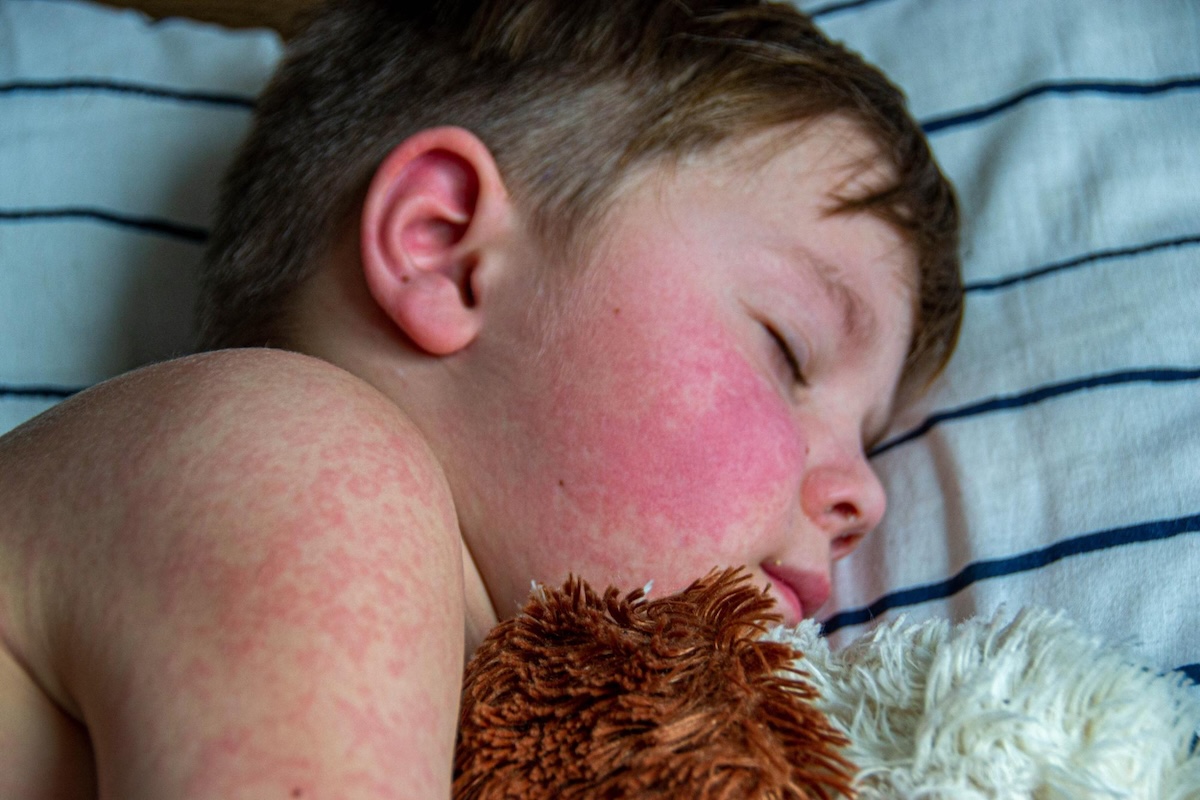Measles is a serious and highly contagious virus that mostly affects children, although anyone who isn’t vaccinated can get it. It spreads easily through the air when someone with the virus coughs, sneezes, or talks. Just being in the same room with an infected person can lead to infection if you’re not protected. While measles may seem like an illness of the past, it still appears in areas where vaccination rates are low or when people travel from places where the virus is more common.

Measles can lead to complications like ear infections, pneumonia, and even brain swelling. The good news is that the measles vaccine is safe and effective. Most people who get both recommended doses are fully protected for life.
What Causes Measles And The Types Of Infections
Measles is caused by the measles virus, which belongs to the paramyxovirus family. Once someone is infected, the virus settles in the nose and throat and quickly spreads to others. Because it is so contagious, one infected person can spread it to 9 out of 10 unvaccinated people around them.
There is only one type of measles virus, but people sometimes confuse it with German measles (also called rubella), which is caused by a different virus and is usually milder. Only the regular measles virus causes the classic symptoms and serious complications that doctors worry about most.
A person who gets the measles virus becomes contagious even before the telltale rash appears. In fact, they can spread the virus about 4 days before the rash shows up and up to 4 days after it starts.
Recognizing The Symptoms Of Measles
Measles symptoms usually begin about 10 to 14 days after exposure. The early stage can feel like a regular cold or flu. You may notice a high fever, a cough, a runny nose, and red, watery eyes. These symptoms last for a few days before the next stage begins.
As the illness progresses, small white spots called Koplik spots may appear inside the mouth. They look like grains of salt and are a key sign of measles.
A few days later, a red, blotchy rash appears. It usually starts on the face and hairline and then spreads down to the chest, back, arms, and legs. The rash may join together in spots and can last about 5 to 6 days. As it fades, the skin may peel slightly.
Other common symptoms include:
-
Sore throat
-
Loss of appetite
-
General tiredness or feeling very unwell
-
Swollen lymph nodes
Measles symptoms tend to get worse before they get better. The fever often rises again when the rash appears. In healthy children, measles will often pass with rest and care, but it’s important to keep a close watch, especially in younger kids or those with weaker immune systems.
How Measles Is Diagnosed
Doctors usually recognize measles based on symptoms and appearance. The combination of fever, cough, and rash is a strong clue, especially if the child hasn’t been vaccinated or was recently exposed to someone who may have had measles.
To confirm the diagnosis, a doctor may take a blood sample or a swab from the throat or nose. These tests look for signs of the measles virus or antibodies your body makes to fight it.
Doctors may also report suspected measles cases to local health departments, especially during outbreaks. This helps prevent the virus from spreading further and allows for public health warnings if needed.
If someone in your home or school is diagnosed with measles, unvaccinated people may need to stay home and away from others for a certain period to avoid spreading the virus.
Treatment Options And What To Expect
There is no specific cure for measles, but supportive care can help relieve symptoms and prevent complications. Most people recover fully with rest, fluids, and proper nutrition.
Treatment usually includes:
-
Getting plenty of rest
-
Drinking lots of fluids to avoid dehydration
-
Using fever reducers like acetaminophen or ibuprofen (only if age-appropriate and approved by a doctor)
-
Using a humidifier or saline drops to ease cough and congestion
For children with severe cases or who are at risk of complications, hospitalization may be needed. This is more likely if the child is very young, undernourished, or has a weakened immune system.
Doctors may also give vitamin A supplements, especially in areas where children have low vitamin A levels. This vitamin helps the body recover and can lower the risk of complications.
If someone is exposed to measles but hasn’t been vaccinated, they may still get a measles vaccine within 72 hours of exposure. This can help prevent the illness or reduce its severity. In some cases, immune globulin, a special blood product, may be given to help protect at-risk individuals.
Preventing Measles And Staying Protected
The best way to protect yourself and your children from measles is through vaccination. The MMR vaccine (measles, mumps, and rubella) is given in two doses—once around the age of 12 to 15 months, and again between 4 to 6 years old.
This vaccine is safe, effective, and offers long-term protection. In communities where most people are vaccinated, the virus has a harder time spreading, which helps protect those who can’t get vaccinated for medical reasons.
It’s also important to check your vaccination status before traveling abroad. Measles is more common in some countries, and outbreaks can happen when travelers bring the virus back home.
Good hygiene can help too. Wash your hands often, avoid sharing drinks or utensils, and stay home if you’re sick. While these habits won’t prevent measles completely, they help reduce the spread of all kinds of viruses.

